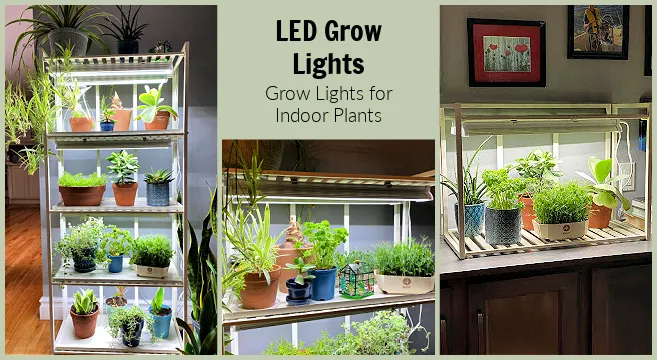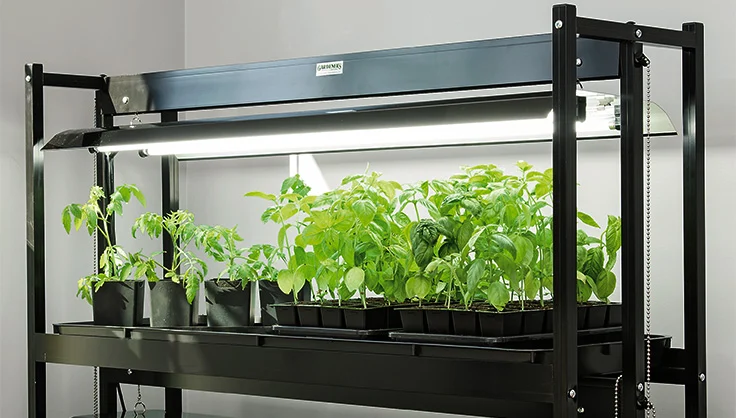Plants struggle to survive in areas with lengthy winters because they cannot photosynthesize. If you want to cultivate plants but don’t have access to natural light, you may use LED grow lights. Several aspects should be examined when selecting a lighting device. The factors include prices, efficiency, total energy emissions, life expectancy, light quality, light amount, light duration, and influence on plant development and blooming. So If you want to buy the best LED grow lights for your indoor plants, go to Spider Farmer and Buy your affordable LED grow lights, tents and kits to grow your plants and get a 30% discount using the Spider Farmer Coupon Code while buying.
Using LED grow lights is the next best thing, so here are some pointers to keep in mind if you decide to buy some: But before you go through the tips, let’s analyze the merits and demerits of LED lighting.
The Benefits of LED
- Easy to install and saves energy
- more robust
- Greater longevity
- Low heat emitted
LED Drawbacks
- Higher starting costs
- Some devices are heavier than others (e.g. grow lamps with heat sinks)
- Use only as necessary (e.g. most LED devices are designed and used in research settings)
- A smaller coverage area
- Various LED colour ratios
- High environmental temperatures diminish lifetime and impair efficiency.
An indoor plant or garden may breathe new life into a room’s decor by bringing a touch of nature into your living area. You can even grow veggies inside, making fresh produce available even to people living in a small city flat. On the other hand, caring for those indoor plants has always been problematic: even in well-lit rooms, many plants do not receive enough light to develop as entirely as they should. Most indoor growers acquire LED grow lights to resolve the shortcomings and ensure healthy plants all the way.
1. Choose the Plants You Want to Grow
Before purchasing indoor grow lights, you must determine their intended application. Because their primary function is to give light for plants to photosynthesize, you must know what plants you intend to cultivate. You will not use it to light up your house or anywhere else.
LED grow lights can have a variety of characteristics that impact plant health, and plants respond differently to varied environments. When you’ve decided on the plants you wish to grow, do some study. Find out what climate they prefer so you can meet their demands.
2. Understanding the Surface Area
If you are planning to have plants within indoor settings, you may not require as many LED grow lights. Large greenhouses, on the other hand, will necessitate the utilization of numerous units. It would be best if you first determined the surface area to determine how much light you should supply.
If the surface area is large, consider purchasing multiple units so that each plant receives sufficient light. The ones under the lights will have no trouble photosynthesizing since they receive adequate sunlight. On the other hand, those further away from the solitary light may have problems developing health.

3. Look for Long-Lasting LEDs
LED grow lights are a cutting-edge alternative for indoor plant cultivation, particularly in biology greenhouses. So, while purchasing LED grow lights, keep durability in mind. High-quality construction is required. Otherwise, you’d be wasting your money.
Plants require adequate light to survive. Therefore if your light continues turning on and off, the plant will not receive as much light as it needs. Aside from affordability, it would be beneficial if you could find units that do not flicker or emit excessive heat.
4. Take into account the PAR
PAR, or Photosynthetically Active Radiation, is the light that plants use. Plants use it as an alternative to sunlight to photosynthesize. Depending on the manufacturer, LED growth lights can have a variety of PAR values. Having stated that, a more excellent PAR rating does not always imply a better bulb.
The PAR should be spread uniformly among the plants. Those immediately beneath the light will receive more PAR. However, those that are further away will not. Therefore, you need to know the surface area of your garden. Consider the finest LED grow lights that can disperse PAR uniformly.
5. Check to see if it has an adequate cooling system.
The LED grow lamp can overheat if used for at least 15 hours daily to provide adequate light for the plants. As previously said, excessive heat can harm your plants and the unit itself. As a result, your LED growth lights should be equipped with an effective cooling system.
Because heat is generated at the rear of LED bulbs, that region should have a heat sink. It directs heat away from the units and plants, preventing overheating.
6. Look for a lighting program.
It is tough to choose which LED grow light to use because many different companies have an extensive range of versions. Each product will have features that may or may not benefit other consumers.
Those that are programmable are the finest. Programmable LED growth lights are helpful since they may be tailored to your specific requirements. You may programme when the light should turn on and off, eliminating the need to do it manually. Some may even enable you to change the strength and spectrum of the morning to suit the plants you’re cultivating.
7. Don’t go for the cheaper alternative of LED grow lights.
LED grow lights are not inexpensive. Regular LED bulbs for household illumination are not as cheap as incandescent or fluorescent bulbs, so expect to pay a premium for LED grow lights that offer life for plants.
While you may be able to locate cheaper LED grow lights, consider it worth it. Cheap does not permanently save money because of low quality, which may require you to spend more on repairs or replacements. As a result, always opt for the best value.
8. Wrapping Up: Led Grow Lights
LED grow lights are a game changer in plant growth. You may now cultivate plants in your own house. Depending on sunshine to develop your plants isn’t always adequate, especially in areas with long winters. So, if you’re considering purchasing LED grow lights, keep the recommendations above in mind to pick the finest one for your plants.

